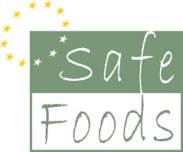3.2 International standards, data collection and legislation
International standards
Under the World Trade Organization's Sanitary and Phytosanitary Measures Agreement, food traded internationally must comply with Codex Standards that are established to protect health of consumers on basis of a sound risk assessment. Such assessments are based on global toxicological evaluations performed by Joint FAO/WHO Expert Committee on Food Additives (JECFA) and Joint FAO/WHO Meeting on Pesticide Residues (JMPR) and estimate exposure to chemicals in the diet and in specific foods. Such exposure assessments are often based on data on levels of chemicals in food from the WHO Global Environment Monitoring System - Food Contamination Monitoring and Assessment Programme (GEMS/Food) database, as well as national data, matched with consumption data for food from the five GEMS/Food Regional Diets.
Data collection
When exposure to a chemical in food approach or exceed the acceptable level of intake, maximum levels for chemicals in food may be set by the Codex Alimentarius Commission, often based on at the lowest level achievable as shown by data submitted by countries.
Developing countries rarely have data to contribute to the development of Codex Standards and therefore may be disadvantaged by these standards in terms of trade. Without this data, developing countries cannot identify their priority food safety issues for risk management interventions that can ensure safer food, protect public health and facilitate exports.
Ultimately, the quality and safety of food depends on the efforts of everyone involved in the complex chain of agriculture production, processing, transport, food production and consumption. As the EU and the World Health Organisation (WHO) put it briefly - food safety is a shared responsibility from farm to fork.
Legislation
The EU food safety policy encompasses the whole of the animal and human food chain. It provides extensive legislation and outlines the responsibility of producers and suppliers in helping to ensure a safe quality of the food supply. The EU regulations are amongst the most stringent in the world.In order to make the area of food regulation more transparent and scientific, there was a renovation of the EU food safety framework that started in the late 1990s:
- In 1997, a new scientific advisory system for the EU was established.
- Eight new Scientific Committees were appointed in addition to a Scientific Steering Committee.
- The European Food Safety Authority (EFSA) was established in 2002. EFSA is an independent body that works in close cooperation with various scientific agencies and institutions in EU member states providing independent scientific advice on all matters with a direct or indirect impact on food safety. It covers all stages of food production and supply, from primary production right through to the supply of food to consumers. EFSA also carries out assessments of risks to the food chain and scientific assessment on any matter that may have a direct or indirect effect on the safety of the food supply, including matters relating to animal health, animal welfare and plant health.
Since contamination generally has a negative impact on the quality of food and may imply a risk to human health, the EU has taken measures to minimise contaminants in foodstuffs. Community measures have been taken for the following contaminants:
- Mycotoxins (aflatoxins, ochratoxin A, fusarium-toxins, patulin)
- Metals (cadmium, lead, mercury, inorganic tin) \
- Dioxins and PCBs
- Polycyclic aromatic hydrocarbons (PAH)
- 3-MCPD
- Nitrates
The basic principles of EU legislation on contaminants in food are in Council Regulation 315/93/EEC of 8 February 1993, which states:
- Food containing a contaminant to an amount unacceptable from the public health viewpoint and in particular at a toxicological level, shall not be placed on the market
- Contaminant levels shall be kept as low as can reasonably be achieved following recommended good working practices
- Maximum levels must be set for certain contaminants in order to protect public health.
Maximum residues levels for certain contaminants in food are set in Commission Regulation (EC) No 1881/2006. This Regulation entered into force on 1 March 2007 and replaced Commission Regulation (EC) No 466/2001.
3.2.1 The European Chemicals Agency
The European Chemical Agency (ECHA), located in Helsinki, Finland is the agency which will manage the registration, evaluation, authorisation and restriction processes for chemical substances to ensure consistency across the European Union. These processes are designed to provide additional information on chemicals, to ensure their safe use, and to ensure competitiveness of the European industry.

In its decision-making the Agency will take the best available scientific and technical data and socio-economic information into account. It will also provide information on chemicals and technical and scientific advice. By assessing and approving testing proposals, the Agency will minimize animal testing.
3.2.1.1 REACH
REACH is a new European Community Regulation on chemicals and their safe use (EC 1907/2006). This is a new law that entered into force on 1 June 2007 and deals with the Registration, Evaluation, Authorisation and Restriction of Chemical substances.

The aim of REACH is to improve the protection of human health and the environment through better and earlier identification of the intrinsic properties of chemical substances.
The REACH Regulation gives greater responsibility to industry to manage the risks from chemicals and to provide safety information on the substances. Manufacturers and importers will be required to gather information on the properties of their chemical substances, which will allow their safe handling, and to register the information in a central database run by the European Chemical Agency (ECHA). The Agency will act as the central point in the REACH system: it will manage the databases necessary to operate the system, co-ordinate the in-depth evaluation of suspicious chemicals and run a public database in which consumers and professionals can find hazard information.
